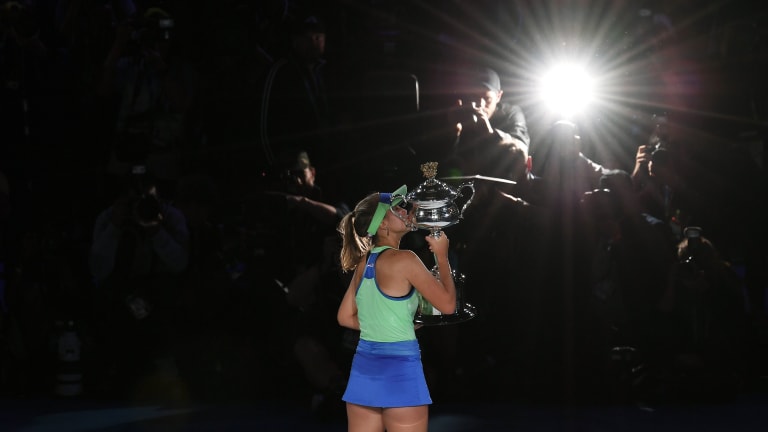Australian Open
The Furious Zen of Kenin: Sofia's stunning run to the Australian Open
By Feb 01, 2020Australian Open
Australia at Last: Reflections on a first trip to the AO
By Jan 29, 2025Australian Open
Alexander Zverev must elevate his game when it most counts—and keep it there
By Jan 27, 2025Australian Open
Jannik Sinner draws Novak Djokovic comparisons from Alexander Zverev after Australian Open final
By Jan 26, 2025Australian Open
Alexander Zverev left to say "I'm just not good enough" as Jannik Sinner retains Australian Open title
By Jan 26, 2025Australian Open
Jannik Sinner is now 3-0 in Grand Slam finals after winning second Australian Open title
By Jan 26, 2025Australian Open
Taylor Townsend and Katerina Siniakova win second women's doubles major together at the Australian Open
By Jan 26, 2025Australian Open
Madison Keys wins her first Grand Slam title at Australian Open by caring a little bit less
By Jan 25, 2025Australian Open
Henry Patten, Harri Heliovaara shrug off contentious first set to win Australian Open doubles title
By Jan 25, 2025Australian Open
Aryna Sabalenka takes a rare loss in Australian Open slugfest
By Jan 25, 2025Australian Open
The Furious Zen of Kenin: Sofia's stunning run to the Australian Open
“It hasn’t sunk in yet,” said the 21-year-old, who will rise to No. 7 and become the highest-ranked U.S. woman following her victory of Garbine Muguruza on Saturday.
Published Feb 01, 2020
Advertising

The Furious Zen of Kenin: Sofia's stunning run to the Australian Open
© AFP via Getty Images
Advertising
The Furious Zen of Kenin: Sofia's stunning run to the Australian Open
Advertising

The Furious Zen of Kenin: Sofia's stunning run to the Australian Open